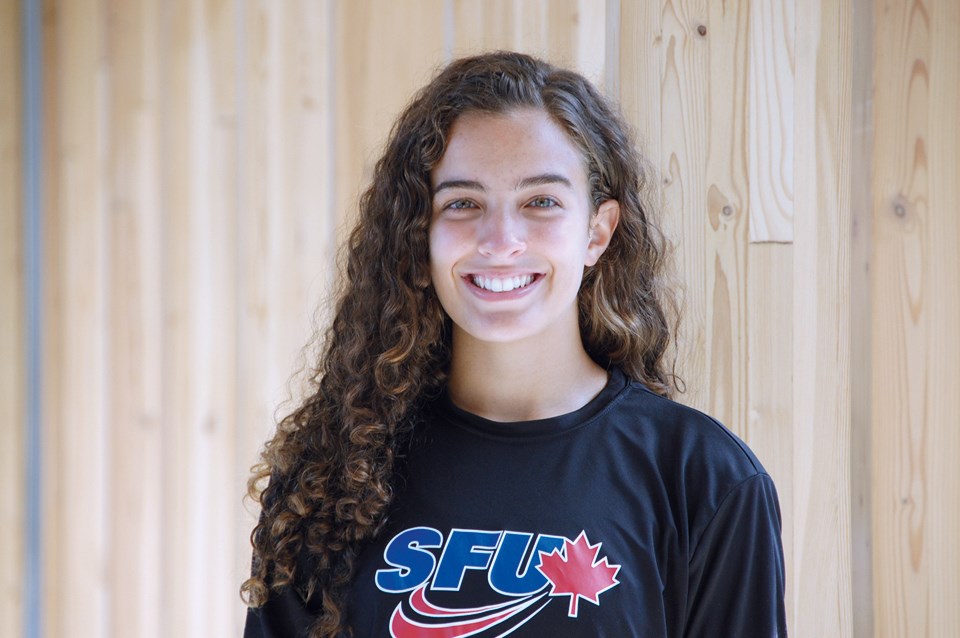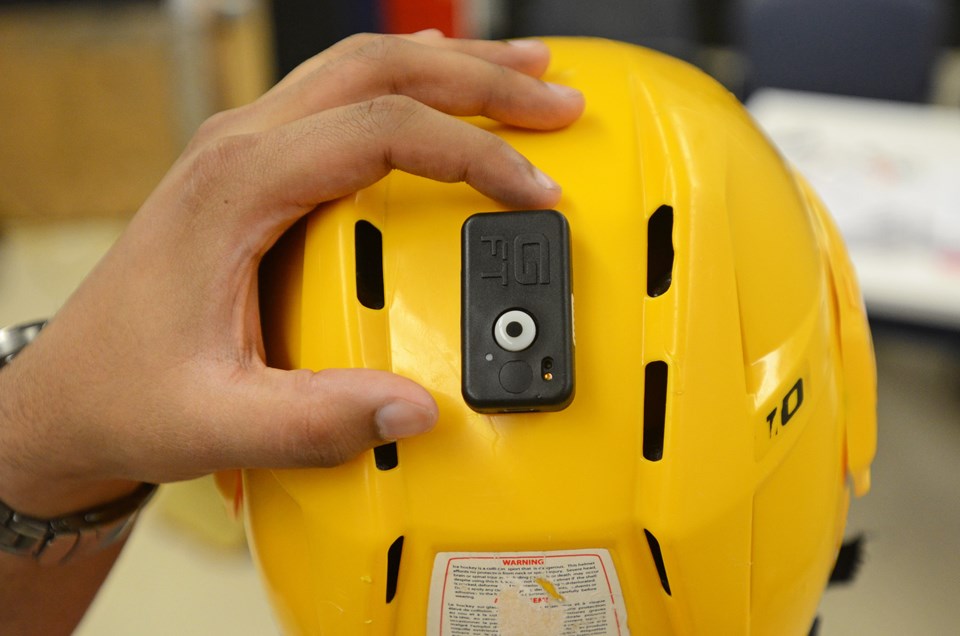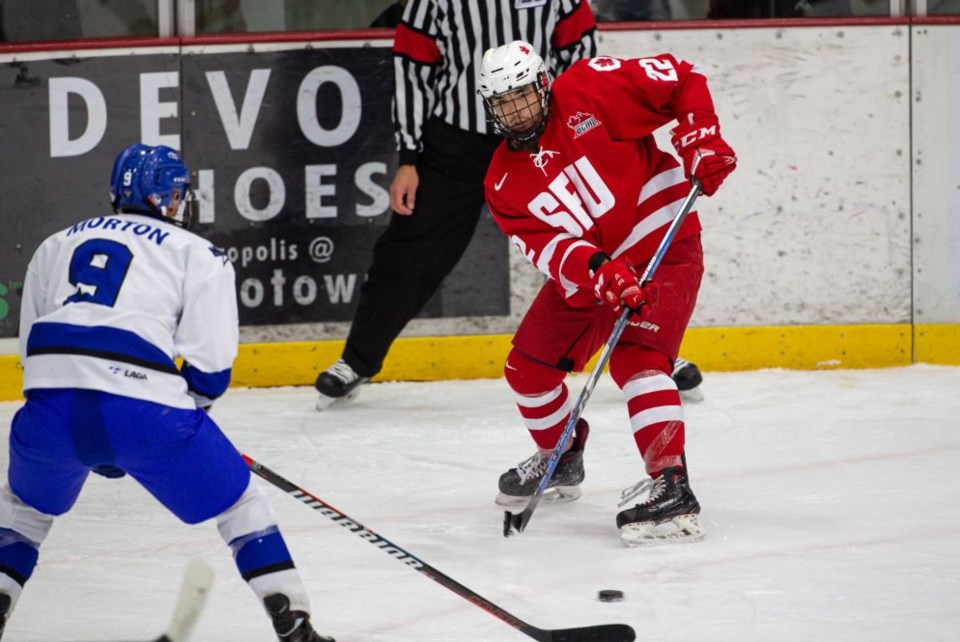PhD student Olivia Aguiar figured she would become desensitized after years of watching SFU hockey players getting hit in the head – but she was wrong.
As part of a head-injury study with SFU’s Injury Prevention and Mobility Lab, Aguiar has analysed hundreds of videos of players’ heads hitting – and being hit by – elbows, hands, the boards, the glass, you name it, and the effect has never worn off.
“Every time I see it, it evokes this feeling in me, and it’s not a good one,” she says.
The athlete in Aguiar – a former midfielder on SFU’s NCAA women’s soccer team – totally gets why a player would put their head in harm’s way for their sport.
But the scientist in her looks back at all those years of taking balls and errant elbows to the head and wonders if there’ll be a price to pay.
Five-year study
Aguiar, who grew up in Coquitlam, started on SFU’s Injury Prevention and Mobility Lab hockey study during an undergrad co-op term in 2017.
Since 2018, she’s led the work as part of her PhD studies.
From 2014 to 2019, a team from the lab went to 33 SFU men’s hockey games and captured 449 head impacts on 37 players with five strategically placed video cameras.

The researchers then analysed the videos for playing zone, location on the ice, puck possession, direction of gaze, object striking the head, location of head impact, trajectory of colliding players and penalties.
The goal was to gather data that would help researchers better understand head injuries and ultimately make the game safer.
Aguiar’s first paper on the study, recently published in the Journal of Biomechanics, noted previous video-based studies had been limited by their use of a single camera that followed the puck, potentially missing head impacts away from the play.
Those studies also didn’t specify which body parts and environmental objects had made contact with the players’ heads or examine penalties called because of the head impacts, according to Aguiar’s paper.
One of the SFU study’s findings was that just 16% of head impacts with another player resulted in calls.
For Aguiar, that’s not so much a reflection on the referee but of Hockey Canada rules that leave it to on-ice officials to judge the severity and violence of an impact and whether it resulted in injury.
“It’s a complete judgement call in the moment, and it’s not always obvious,” Aguiar says.
Instead of penalties being based on severity and injury, she suggests they could be changed to cover head contact, period.
The video study also made other findings that could be used to make the game safer, such as the fact that hockey players’ heads are just as likely to contact the boards and glass as another player.
The takeaway is that the environment could be modified to avoid head injuries and not just the rules or the players’ helmets and pads.
“There are so many different avenues in which we can make the game safer, which is exciting,” Aguiar says.
While shoulders and elbows get a lot of attention in hockey, another interesting finding in the study was that hands are actually twice as likely to be involved in head impacts as those body parts.
“A lot of these hand to head impacts you can think of as maybe being more of ‘sending a message’ or telling your opponent ‘Hey, I’m here,’” Aguiar says. “We know that the accumulation of all these impacts, it might not seem like a big deal right now, but it could potentially have longterm consequences down the road.”
More to come
Aguiar’s first paper focused exclusively on the information captured on the videos.
Her next will incorporate information about the severity of the head impacts as measured by domino-sized sensors attached to the SFU players’ helmets during the games.
One important benefit of the on-ice study, according to Aguiar, is how data collected during the real-life games has helped refine studies in the lab.

“You have a better understanding of real life impacts and what’s going on on the ice, so you can probe those questions further in a lab,” she says.
With players barrelling along the ice at top speeds in an enclosed space, Aguiar acknowledges there’s no way to do away with head impacts in hockey altogether.
The goal, she said, is to reduce how often and how hard heads get hit, and to do it in a way that won’t cause “shell shock” for those invested in hockey culture.
The athlete in her knows that won’t be easy.
“If someone said ‘You can never head a ball again’ – to the scientist in me, that makes complete sense. To the player in me, that’s been playing the sport for 20 years, that has scored goals that were headers, that got praised for heading a ball, that’s way more challenging,” she says.
At the end of the day, though, she’s confident a better balance can be found between safety and hockey culture.
“We’re not trying to say, ‘Make the game less physical!’ That’s why people love hockey,” Aguiar says. “But we want to make the game safer, and we want to protect this beautiful vital organ that makes us us.”
Follow Cornelia Naylor on Twitter @CorNaylor
Email [email protected]



